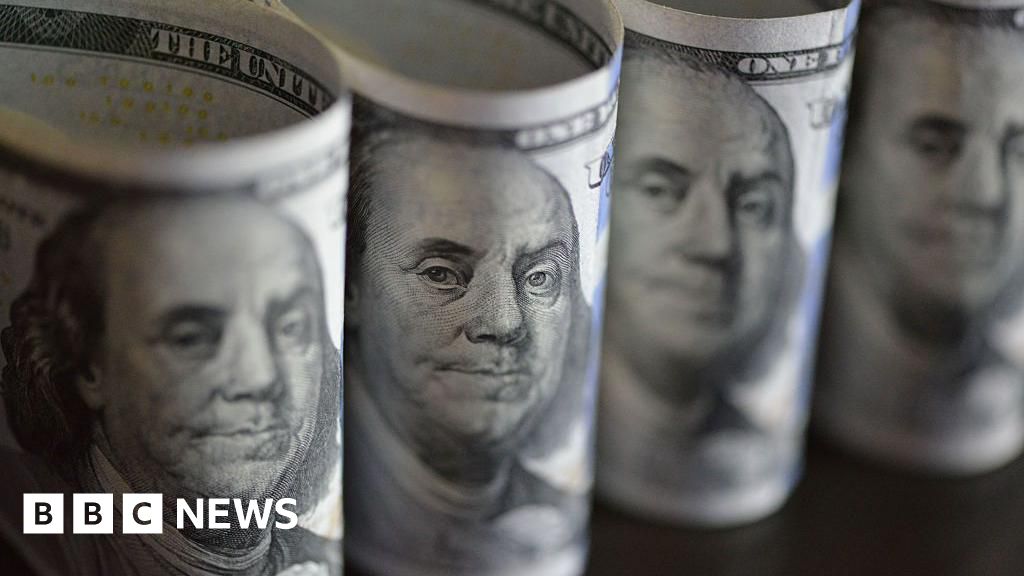The Trump administration has said the reason for these recent rounds of tariffs on global trading partners is to give Americans “long term wealth” by creating manufacturing jobs, which (goes the reasoning) would come back to America because it would no longer be cost effective to produce goods overseas due to the tariffs.
Do you recall how President Donald Trump’s 2017 Tax Cuts & Jobs Act was supposed to create jobs by reducing taxes? A quick review of the past might foretell our future.
In 2017, then-Treasury Secretary Steven Mnuchin said the Republican tax plan would spur sufficient economic growth to pay for itself and more. On Dec. 11, 2017, the Treasury released a one-page analysis claiming that the law would increase revenues by $1.8 trillion over 10 years.
Well, that didn’t happen. Once those 2017 individual tax cuts expire this year, most taxpayers — 53.4% — will face a tax increase; 69.7% of those in the middle quintile (40th to 60th percentile) will pay more, compared to just 8% of the highest-earning 0.1%.
People are also reading…
As for creating jobs, looking at historical non-farm labor participation rates on bls.gov revealed Trump inherited a 62.7% labor participation rate from the Obama administration. During Trump’s four-year tenure, he had year-end rates of 62.7% in December 2017, 63% in December 2018, 63.3% in December 2019, and ended with 61.5% in December 2020.
Those tax cuts that expire this year for individuals had a maximum increase in labor of only 0.6% prior to the COVID pandemic that caused the loss of many jobs during Trump’s tenure. During the Biden administration, labor participation went from Trump’s closing rate of 61.5% back to 62.5% in Dec 2024 — close to Trump’s starting rate in January 2017.
Now, the Trump administration and the Republican party say these exorbitant tariffs will restore the U.S. to its status in the 1960s, when much of manufacturing was done in America. When my family lived in Brockton, Mass., during the late 60s, Brockton was known as the “Shoe City” because of several shoe factories there. But the shoe factories closed by 1967 and left the U.S.
This administration seems to have no understanding of the American business economy.
When considering typical consumer behaviors, it’s easy to predict the outcome. If you increase the cost of goods to consumers especially by a federal sales tax (a tariff is ultimately a consumer tax) of 25% or more, that’s too big for consumers of low to moderate means to ignore.
Wages aren’t going up at the same time, so consumers reduce discretionary spending to cover essentials. When consumers reduce or stop spending, businesses close; when businesses close, unemployment increases, which further exacerbates the reduced spending and downward cycle.
What would it take for a company to bring its manufacturing back to the U.S.? Ask any business planner in local or state government how long it would take for a company with an overseas factory to identify a place in America to relocate a factory, get all the required permits from local governments, hire an architecture firm to design the new factory, hire a developer to build the factory, recruit and train employees to operate the factory, and establish all the components of the supply and distribution chains.
My guess is about five years, depending on the type of factory. And remember that Americans will not work for the low overseas labor rates that keep our consumer products reasonably priced.
After the billion-dollar semiconductor factory was built in Arizona to reduce dependency on semiconductors made overseas, it only employed 100 engineers and technical people because of the extensive use of robotics and AI to do the manufacturing. That foretells factories that might come back will likely be heavily automated and employ few people.
According to the Small Business Administration, small businesses account for 99.9% of all business, 45.9% of all employees in the U.S. and 43.5% of our nation’s GDP. These are not the companies that have factories overseas.
Small profit margins mean these businesses have no tolerance for cost increases inflicted by tariffs. And without adequate profits, the Republican administration’s actions will kill many of these small businesses. Their jobs and economic impact will not return.
The question that continuously surfaces is why the Trump administration and the Republican Party are engaged in such a destructive path while continuously promising something they already know is not feasible.
Who is going to benefit from this? Somebody is — but it certainly isn’t mainstream America or the any part of the small business community which employs almost 60 million people nationwide.
Vail is a business consultant. He lives in O’Fallon, Illinois.





